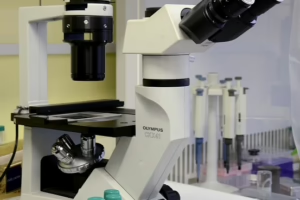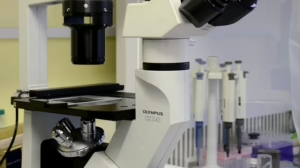The Green Revolution: How Plants Adapt to Climate Change
Introduction
The Green Revolution refers to a period of agricultural transformation that began in the mid-20th century, characterized by the introduction of high-yielding varieties (HYVs) of staple crops, increased use of fertilizers and pesticides, and the expansion of irrigation techniques. While the original Green Revolution focused on alleviating hunger and increasing food production, the concept has evolved to encompass new challenges posed by climate change. In this article, we will explore how modern agricultural practices, alongside the remarkable abilities of plants to adapt to changing conditions, form a critical response to climate challenges.
Historical Context of the Green Revolution
The Origins
The Green Revolution began in the 1940s with advances in genetics and agricultural techniques, spearheaded by scientists like Dr. Norman Borlaug, often called the “father of the Green Revolution.” His work led to the development of HYVs of wheat and rice that significantly increased yields in countries like Mexico and India.
Economic and Social Impacts
The introduction of these new crop varieties had profound effects. Countries that adopted these technologies saw substantial increases in food production. However, the benefits were not evenly distributed, leading to economic disparities and social tensions in some regions.
Climate Change and Its Impacts on Agriculture
Understanding Climate Change
Climate change, driven by human activities such as burning fossil fuels and deforestation, is causing shifts in weather patterns, rising temperatures, altered precipitation, and more frequent extreme weather events. These changes pose significant risks to agricultural productivity.
The Challenge to Crops
-
Temperature Variability: Many staple crops are sensitive to temperature changes. Increased heat can reduce yields and affect crop quality.
-
Water Availability: Changes in rainfall patterns can lead to droughts or flooding, both detrimental to crops.
-
Pest and Disease Pressure: Warmer temperatures can create favorable conditions for pests and diseases, leading to increased crop losses.
Plant Adaptation Mechanisms
Plants have evolved a variety of mechanisms to adapt to climatic changes. Understanding these natural adaptations is key to developing resilient agricultural practices.
Genetic Adaptations
-
Drought Tolerance: Certain plants develop deeper root systems or specialized structures to store water more efficiently.
-
Heat Stress Response: Some plants can produce heat-shock proteins, which protect cellular functions under high temperatures.
-
Salt Tolerance: Coastal agricultural zones suffering from saltwater intrusion require crops that can tolerate salty conditions, a trait found in some plant species.
Epigenetic Changes
Besides genetic changes, plants can also undergo epigenetic modifications in response to environmental stresses. These changes can influence gene expression without altering the DNA sequence, allowing rapid adaptation to external conditions.
Phenotypic Plasticity
This refers to the ability of an organism to change its phenotype in response to environmental conditions. For instance, plants may alter their leaf orientation or root architecture based on light availability or soil moisture.
Role of Biotechnology in Plant Adaptation
Advancements in biotechnology and genetic engineering have created new opportunities for improving plant resilience to climate change.
Genetically Modified Organisms (GMOs)
GMOs are designed to express specific traits that enhance adaptability to environmental stress. For example:
- Bt Cotton: Engineered to resist pests, reducing the need for chemical pesticides and ensuring higher yields.
- Drought-Resistant Crops: Crops modified to enhance water use efficiency.
CRISPR Technology
CRISPR gene-editing technology allows for precise modifications in plant genomes. Scientists are developing varieties of crops that can withstand heat, drought, and saline conditions more effectively than traditional plants.
Sustainable Agriculture Practices
While technological innovations are essential, sustainable agricultural practices must also be integrated into the adaptation strategy to combat climate change.
Integrated Pest Management (IPM)
IPM combines biological, mechanical, and chemical methods to manage pests sustainably, reducing reliance on synthetic pesticides.
Agroforestry
This practice integrates trees and shrubs into agricultural lands, improving biodiversity, enhancing soil quality, and providing additional income sources for farmers.
Crop Rotation and Diversity
Planting a variety of crops can improve soil health, reduce pest outbreaks, and enhance the resilience of the agricultural system overall.
Policy and Education
Effective adaptation to climate change in agriculture also requires supportive policies and community education.
Government Policies
Policies that incentivize the research and development of resilient crop varieties, promote sustainable practices, and support farmers in the transition to new methods are crucial.
Community Education and Involvement
Raising awareness among farmers about climate change’s impacts and practical adaptation strategies enables them to make informed decisions.
Conclusion
The Green Revolution reshaped global agriculture, providing critical food security during the 20th century. Today, the ongoing impacts of climate change challenge agricultural systems worldwide, making it imperative to adapt and innovate. By understanding plant mechanisms for adaptation, leveraging biotechnology, and implementing sustainable practices, we can build a resilient agricultural future. Investing in these areas not only secures food sources but also promotes ecological balance, ensuring that agriculture continues to thrive in a changing climate.
References
- Borlaug, N. E. (1970). The Green Revolution, Peace, and Humanity. Fourteenth World Food Congress.
- FAO. (2016). Climate Change and Food Security: Risks and Responses.
- IPCC. (2021). Climate Change 2021: The Physical Science Basis.
- Ainsworth, E. A., & Ort, D. R. (2010). A Classic Revisited: The CO2 Fertilization Effect. Plant, Cell & Environment.
- Khanna, M., & Zilberman, D. (2001). Farm-Level Economic Impacts of Transgenic Crops in the U.S. Agricultural and Resource Economics Review.
- Karp, A., et al. (2013). Genetic Engineering: Precise Plant Breeding for a Sustainable Future. Journal of Experimental Botany.
- Pretty, J. (2008). Agricultural sustainability: Concepts, principles and evidence. Philosophical Transactions of the Royal Society B: Biological Sciences.


























Add Comment